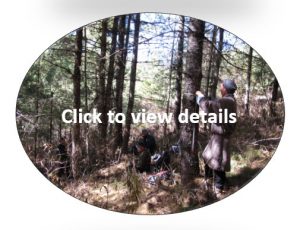In 1989, recognizing the growing importance of community involvement in protection and management of forest resources, the Division (today known as SFED) started as the Afforestation Division under the then Department of Forest. Since then, the Division has evolved and has been renamed several times, in accordance to the role it played as the management of forests shifted its primary focus on protection to balancing conservation with sustainable use of forest resources. Despite the name changes, the vision of the Division have always been to empower communities manage forests sustainably for socio-economic and environmental benefits, poverty reduction and to contribute to overall sustainable forest management in the country. Therefore, SFED has always worked on programs where community participation has remained the focus in sustainably managing our forests.
In 1993, in accordance with the decentralization policy of the Royal Government of Bhutan, social forestry activities such as: forest fire management, protection of Tsamdrog and Sokshing from encroachment and allocation of firewood was designated as Dzongkhag level program. Therefore, in 1994, the Division was renamed as Social Forestry and Extension Section. Accordingly, forestry staffs were transferred to all Dzongkhag administrations for implementation of the decentralized forestry activities, integrating the Renewable Natural Resource (RNR) management concept.
In 1997, the section was renamed as Social Forestry and Afforestation Section, gradually focusing its role in technically backstopping the Dzongkhag Forestry Sectors for effective implementation of the decentralized activities.
In 2000, during the restructuring exercise of the Royal Government of Bhutan, the Social Forestry Section was merged with the Forest Resource Development Division under the then Department of Forest Directorate. However, in 2001, in view of the important role the section played in enhancing participatory forest management, a Forestry Extension Division was created, coinciding with the decentralization of two other activities namely, implementation of afforestation activities and sanctioning authority of timber for rural house building.
In 2003, considering the importance of the role of forest ecosystem and community participation in soil and water management, a Watershed Management Section was created in the Division and renamed as Social Forestry Division, responsible to act as the secretariat for the 20 Dzongkhag Forestry Sectors. However in 2009, the Watershed Management Section was developed into a full fledged Division under the Department of Forests and Park Services.
Today, the Division is known as the Social Forestry and Extension Division (SFED) and it is one of the five functional Divisions of the Department of Forests and Park Services. There are four Sections in SFED focusing on the following programs: Agroforestry, Community forestry, Non-Wood Forest Products and Plantation. The Division facilitates and works toward strengthening the capacity of the communities to sustainably manage forest resources by promoting participatory forest management and good governance.
Vision:
To empower communities manage forests sustainably for socio-economic and environmental benefits, poverty reduction and to contribute to overall sustainable forest management in the country.
![]()









